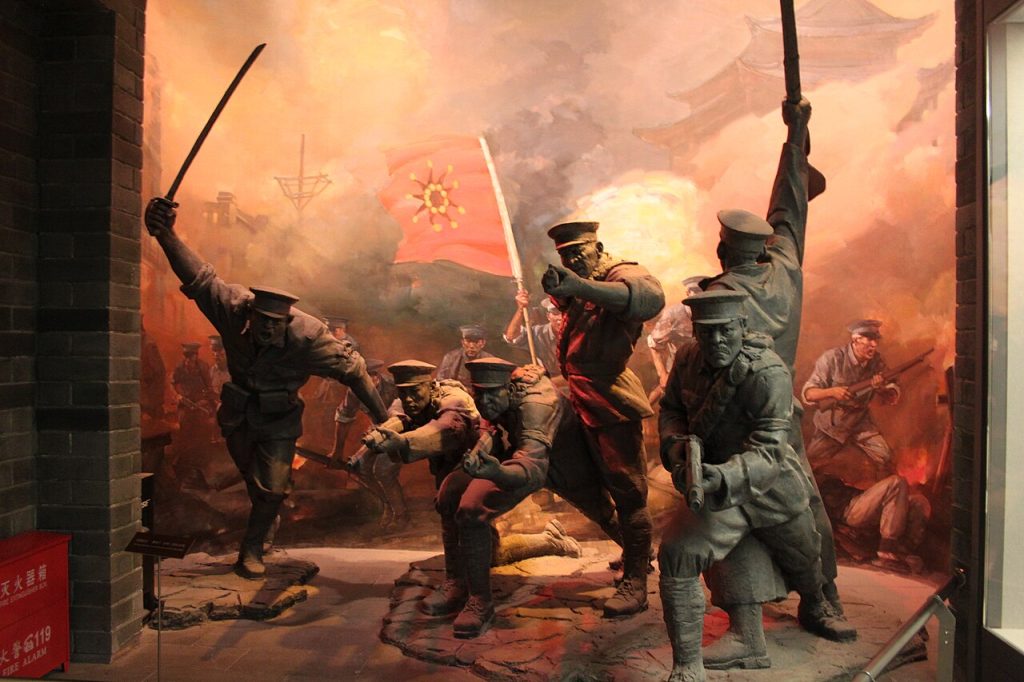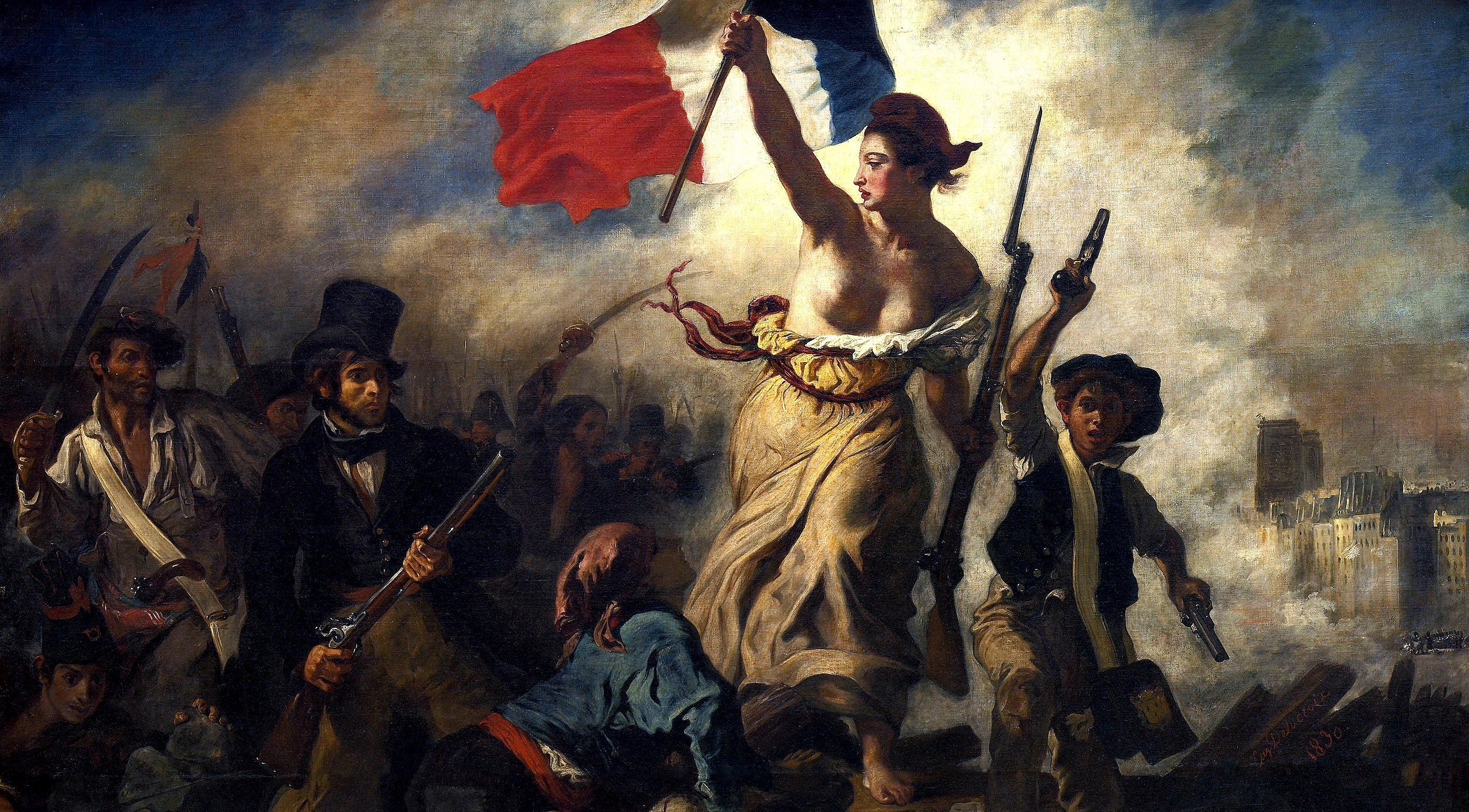 hroughout history, revolutions have been a powerful tool to effect drastic change in society. From the American and French revolutions of centuries ago to more recent movements like the Arab Spring and Hong Kong protests, each revolution has its own unique story and set of circumstances that led to it. But what do these successful revolutions have in common? What can we learn from them about how to start a successful revolutionary movement? In this blog post, we will explore how to start a revolution according to history – by developing a revolutionary movement, creating political or social change, sparking people’s interest and emotions, and looking at examples of historical revolutions. By understanding the fundamentals behind starting a successful revolution, you can create an environment ripe for positive change.
hroughout history, revolutions have been a powerful tool to effect drastic change in society. From the American and French revolutions of centuries ago to more recent movements like the Arab Spring and Hong Kong protests, each revolution has its own unique story and set of circumstances that led to it. But what do these successful revolutions have in common? What can we learn from them about how to start a successful revolutionary movement? In this blog post, we will explore how to start a revolution according to history – by developing a revolutionary movement, creating political or social change, sparking people’s interest and emotions, and looking at examples of historical revolutions. By understanding the fundamentals behind starting a successful revolution, you can create an environment ripe for positive change.
Defining Revolution
A revolution has been used throughout history to refer to periods of drastic change in the structure and functioning of society. It is a powerful tool used to bring about social, political, and economic changes. Revolution can be either peaceful or violent and often involves the overthrow of oppressive regimes or systems of government.

At the heart of all successful revolutions is a small group of people who are passionate about their cause and willing to risk their lives for it. These revolutionaries are driven by strong beliefs in their mission and a sense of injustice or oppression that motivates them to act. They have an unwavering passion for change and often employ tactics such as civil disobedience, strikes, protests, petitions, boycotts, or even violence in order to achieve their goals.
The concept of revolution is used to describe a variety of social, political, and economic changes that can take place within society. The French Revolution was one example where revolutionary forces overthrew the monarchy in favor of democracy; while the American Revolution sought independence from British rule; and recent movements like the Arab Spring aimed at overthrowing authoritarian governments across North Africa and the Middle East.
No matter what form they take (peaceful or violent), revolutions have proven time again that they can be effective tools for bringing about social change when properly organized by dedicated individuals with strong beliefs in their cause. By understanding how revolutions work according to history, you can better prepare yourself for leading a successful movement should you ever need to do so.
Developing a Revolutionary Movement

In order to spark and lead a successful revolution, it is important to understand the root cause of the current situation and why change is needed. This will not only help you articulate your message and objectives clearly, but it will also help you determine how to best mobilize people towards your cause.
Once you have identified the issue that requires change, it is important to understand the audience in order to effectively communicate with them and motivate them to join the movement. Consider who your target audience is and what kind of message would resonate with them most strongly. It may be beneficial to create different messages for different audiences in order to ensure that everyone hears what they need to in order to take action.
After understanding your audience, it’s time to start organizing people into unified groups with clear goals and objectives. This could involve creating teams or councils responsible for specific tasks such as communication, outreach, fundraising, etc., as well as coordinating efforts across multiple locations if necessary. Establishing a strong sense of collective responsibility among members of the revolutionary movement will be paramount for its success.
Having established a team and a shared purpose, it’s time to create a powerful narrative that captures public attention and builds emotional resonance within people about their cause. This could include telling stories about those affected by injustice or oppression in an effort to draw empathy from potential supporters; using data-driven arguments or evidence; or highlighting cases of successful revolutions elsewhere that demonstrate how change can be achieved through collective action.
Finally, consider which tactics will be used for achieving objectives: protests, rallies, boycotts or other forms of direct action are some common examples. Be sure all participants are aware of their role in the movement so they can take action at strategic moments when their involvement can have maximum impact on furthering progress towards the desired outcome.
By following these steps carefully and thoughtfully planning out each stage of building a revolutionary movement according to history helps ensure success in bringing about meaningful social change!
Creating a Political or Social Change
When aiming to bring about a political or social revolution, it is important to have a clear and achievable goal. Analyzing the current political and social systems can help determine the best course of action needed for change. It is also essential to organize people into unified groups with a shared message that resonates with supporters of the cause. Before making any big moves, potential consequences should be considered, both good and bad, in order to ensure those involved are aware of risks and possible outcomes.
At its core, the objective remains on achieving meaningful social change; this requires an effective narrative that captures public attention. Knowing which tactics are most appropriate for success is key – civil disobedience, strikes, protests and petitions may all be necessary at different stages in order to achieve desired results. Through careful planning and implementation of these strategies, revolutionaries can lead their cause towards success.
Sparking People’s Interest and Emotions

When it comes to launching a successful revolution, the starting point is to engage with people’s emotions. To do this, it is important to identify the core emotions that can drive individuals to join and support a cause – such as hope, pride and anger – then craft a narrative that resonates with this target audience. One way for leaders to develop this narrative is by providing examples of both successful and failed revolutions in history, showing what could be achieved if certain preconditions are met. This builds up an understanding of why change needs to happen now and encourages everyone involved in creating such changes.
Social media has become an invaluable tool in amplifying revolutionary messages quickly and widely. Organizers are able to reach out beyond their own networks into diverse populations who may have not otherwise been exposed to their message. Engaging potential supporters through digital media alongside traditional methods such as rallies or protests allows movements to build a strong presence online which can bring about real social change when enough people are convinced by the mission they are fighting for.
It is clear that sparking interest and emotion plays an integral role in uniting disparate individuals towards one common goal – something which has been seen throughout history during successful revolutions. Although achieving this requires thoughtful planning ahead of time – from understanding who your message should be directed at, developing a powerful narrative that captures public attention while eliciting emotion, utilizing the right tactics at the right time – when done correctly it can result in lasting social changes that benefit all parties involved.
Examples of Historical Revolutions and What We Can Learn From Them

Revolutions have been a powerful tool for achieving drastic change throughout history, and it is important to understand the characteristics of successful revolutions and the lessons we can learn from them. The English Revolution of 1642-1651 was a major event in British history, and its legacy can still be seen today. This revolution overthrew the monarchy and established a republic in its place. Through this example, we can see how a small group of passionate people who believed in their mission were able to achieve such monumental change.
The French Revolution of 1789-1799 was another significant event that changed the course of history. This revolution produced major political and social changes, but ultimately led to much instability due to its failure to address economic issues. It serves as an example of how revolutions must take into account all aspects of society in order to be successful.
The American Revolution of 1775-1783 resulted in a revolutionary outcome; the independence of a nation from its colonial authority. This revolution serves as an example of how effective organization and tactics such as civil disobedience, strikes, protests and petitions can lead to success when done with intent and purpose.
The Russian Revolution of 1917 also had an immense impact on global events by overthrowing Tsarism, introducing Marxist-Leninist communism into Russia’s government system,and sparking worldwide revolution movements across Europe during WWI. We can learn from this example that even though there may be drastic outcomes associated with revolutionary actions, they will often result in long-term positive change if handled correctly.
Finally, the Chinese Revolution 1949 saw the establishment of a communist party ruling China which replaced feudalism with socialism on mainland China for over half a century till now (2021). This revolution taught us that having unified goals shared by large numbers is essential for success; it is only when people are united towards one cause that true power can emerge from collective action.
By looking at these examples from different time periods around the world, we gain valuable insight into what has worked historically in bringing about meaningful social change – whether through forming passionate groups or using effective tactics like civil disobedience – and what hasn’t worked so well – such as failing to address economic issues or acting without proper planning. As we move forward into our own current times, understanding these lessons will prove invaluable in developing successful revolutionary movements that create lasting positive changes within society.
Avid Writer with invaluable knowledge of Humanity!
Upcoming historian with over 30 million views online.
“You make your own life.”





